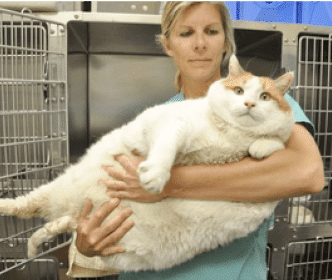In the U.S. and Europe, there are statistically about as many obese pets as obese humans. As obesity is an extremely serious condition which can cause many other health problems, you should keep an eye on Fido if he starts getting a bit plump!
Veterinarians are also seeing more and more pets whose weight has more to do with an unhealthy diet than how fluffy they are. According to a survey conducted back in 2014 by the UK pet food organization PFMA (Pet Food Manufacturers Association), 45% of dogs and 40% of cats can actually be classed as ‘obese’.
In the U.S. and Europe, there are statistically about as many obese pets as obese humans. As obesity is an extremely serious condition which can cause many other health problems, you should keep an eye on Fido if he starts getting a bit plump!
Veterinarians are also seeing more and more pets whose weight has more to do with an unhealthy diet than how fluffy they are. According to a survey conducted back in 2014 by the UK pet food organization PFMA (Pet Food Manufacturers Association), 45% of dogs and 40% of cats can actually be classed as ‘obese’.
Obesity in a dog
Dogs are oftentimes described as being able to eat anything, as well as being expert beggars. One flash of puppy-dog eyes at dinner time may lead to endless scraps of just about anything being passed to a canine companion. However, this is too often how dogs become overweight – too many treats and not enough exercise.
The likelihood of obesity increases with your pet’s age, with 70% of overweight dogs being over nine years old. Female dogs are actually more at risk than males, however, both sexes face an increased risk after being spayed and neutered.

